- Home
- Herman Melville
Moby-Dick (Barnes & Noble Classics Series) Page 2
Moby-Dick (Barnes & Noble Classics Series) Read online
Page 2
HERMAN MELVILLE
Herman Melville was born in New York City on August 1, 1819, to Allan and Maria Gansevoort Melvill. His father was an importer of French goods and his mother the daughter of a Revolutionary War hero. During a national economic depression, the family business faltered; Herman’s father was unable to stabilize it or provide an adequate income. The family moved to Albany in 1830, and in 1832 Allan Melvill died, leaving the family in debt.
Young Herman took a series of jobs to help support his mother and siblings, working as a bank clerk, a farmhand, and a teacher. He also tried to earn money by writing and in 1839 published two installments of “Fragments from a Writing Desk” in the Democratic Press and Lansingburgh Advertiser. However, his career as a serious, full-time writer was not to begin for another seven years. During that interval, Melville worked as a seaman on ships traveling around the world. In 1841 he sailed aboard the Acushnet, a whaling vessel bound for the South Seas, and spent time in the Marquesas Islands, Tahiti, and Hawaii. His foreign adventures provided material for his first two novels, Typee (1846) and Omoo (1847), which were very successful.
In 1847 Melville married Elizabeth Shaw, daughter of the chief justice of Massachusetts and a close friend of his sisters. Around the same time, he began a friendship with Evert Duyckinck, an editor of The Literary World, who introduced him to members of the New York literary scene. Over the next few years, he wrote articles for The Literary World and Yankee Doodle, a satirical magazine modeled on the British magazine Punch. In 1849 Melville published Mardi, in which he combined a Polynesian adventure with a doomed symbolic quest. When Mardi was not well received, he tried to return to his earlier, more successful storytelling mode with Redburn (1849) and White-Jacket (1850), but the books turned out to be too serious and melancholy to reach a wide audience.
In 1850 Melville purchased a farm, Arrowhead, in Pittsfield, Massachusetts, and thus became a neighbor to author Nathaniel Hawthorne. The two had a close friendship—Melville dedicated his masterwork, Moby-Dick (1851), to Hawthorne. Like his other recent novels, Moby-Dick was not highly acclaimed when it was first published. Critics and readers were confused and disappointed, having expected a narrative more akin to the literary-journalistic style of the author’s earlier works. The failure of Moby-Dick and of his subsequent novels tormented Melville. He eventually gave up writing as a profession and for nineteen years held a job as a customs inspector at New York harbor. During this time he wrote poetry, some of it reflecting the political climate of the 1860s, the American Civil War, and Reconstruction.
Herman Melville died in 1891. It was not until the “Melville revival” of the 1920s that Moby-Dick and the author’s other works gained him the status in which he is held today—as one of America’s greatest writers. Melville’s short novel Billy Budd was published in 1924.
THE WORLD OF HERMAN MELVILLE ANDMOBY-DICK
1819 Herman Melvill is born on August 1 in New York City to Allan and Maria Gansevoort Melvill, the third of eight children. (The family will add the final ‘e’ in Melville after Allan’s death.) The United States is recovering from an economic depression, and businesses like Allan Melvill’s import concern are still struggling. The family is financially unstable and frequently borrows money from relatives.
1826 Herman contracts scarlet fever, which leaves him with permanently weakened eyesight.
1830 Allan Melvill’s business fails, and the family moves to Albany, New York. Herman enrolls at the Albany Academy, where he remains until his father’s death.
1832 Allan Melvill dies, deeply in debt. Herman takes a number of jobs, such as bank clerk and farmhand, to help his family financially.
1835 Herman enrolls in the Albany Classical School, where he is exposed to James Fenimore Cooper, Sir Walter Scott, Lord Byron, and other early-nineteenth-century British poets.
1837 Melville teaches in a school near Pittsfield, Massachusetts. The family is forced into bankruptcy and can no longer maintain their home in Albany. They move to Lansingburgh, New York.
1838 Melville studies surveying at Lansingburgh Academy, in hopes of working as an engineer on the Erie Canal, a plan that never comes to fruition.
1839 Melville publishes two installments of “Fragments from a Writing Desk” in the Democratic Press and Lansingburgh Advertiser. The amateurish composition provides insight into Melville’s literary influences; he quotes directly from or
alludes to Thomas Campbell’s The Pleasures of Hope, Robert Burton’s The Anatomy of Melancholy, William Shakespeare’s Hamlet, Lord Byron’s Childe Harold’s Pilgrimage, Sir Walter Scott’s Ivanhoe, poems by Samuel Taylor Coleridge, and Greek and Roman mythology.
In June Melville signs on as a crew member on a ship traveling between New York and Liverpool. He finds the grime, poverty, and starvation of Liverpool astonishing and horrifying, and sees for the first time the need for social reform. He returns to the United States in October and takes another teaching position, this time in Greenbush, New York.
1840 Melville works as a substitute teacher in Brunswick, New York. He and a friend, Eli James Fly, look for work in Galena, Illinois, near Melville’s uncle.
1841 Melville ships as a seaman aboard the Acushnet, a whaling vessel bound from New Bedford, Massachusetts, for the South Seas; the trip provides facts and ideas for Moby-Dick. Before the voyage, he goes to the Seaman’s Bethel and hears a sermon, just as Ishmael listens to Father Mapple in the Whaleman’s Chapel before sailing with the Pequod.
1842 Melville deserts ship with Richard T. Greene in the Marquesas Islands and spends several weeks among the natives of the Taipi valley. An Australian whaling ship picks him up on August 9; when they reach Tahiti, he and others are held in light confinement as mutineers after refusing to obey orders from the first mate. Melville befriends the ship’s doctor, and the two become “beachcombers” throughout the Tahitian islands, where they encounter native villages and Catholic and Protestant missionaries.
1843 Melville spends four months in the Sandwich Islands (as Hawaii was then called), at Lahaina (Maui) and Honolulu. In August he enlists in the U.S. Navy as an ordinary seaman and sails for home.
1844 Back in New York, Melville begins writing about his sailing adventures.
1846 With the help of his older brother, Gansevoort, Melville publishes his first book, Typee: A Peep at Polynesian Life, a novel about his stay with the natives in the Marquesas. The
poet Walt Whitman reads the novel and writes in the Brooklyn Eagle that it is “a strange, graceful, most readable book.”
1847 Melville publishes Omoo: A Narrative of Adventures in the South Seas, another account of his travels and experiences with natives in the Pacific Islands. Both Typee and Omoo are hugely successful. He begins a friendship with Evert Duyckinck, an editor of The Literary World. Over the course of the next few years, Duyckinck will introduce Melville to William Cullen Bryant, Bayard Taylor, N. P. Willis, probably Washington Irving and Edgar Allan Poe, and other members of the New York literary scene.
In August Melville marries Elizabeth Shaw, daughter of family friend Lemuel Shaw, chief justice of the Supreme Court of Massachusetts. Melville’s attempts to secure a gov ernment appointment in Washington are unsuccessful, and he and Elizabeth settle in New York City. Over the next few years, he writes articles for The Literary World and Yankee Doodle, a satirical magazine modeled on the British maga zine Punch.
1849 The Melvilles’ first child, Malcolm, is born. Melville publishes Mardi: And a Voyage Thither, which begins as a Polynesian adventure but becomes a doomed symbolic quest. Mardi is not well received by critics or readers. Melville tries to return to his earlier, more successful storytelling mode with Redburn: His Voyage. Being the Sailor-Boy Confessions and Reminiscences of the Son-of-a-Gentleman, in the Merchant Service; however, his increasing seriousness and melancholy are evident.
1850 Melville publishes White-Jacket; Or, The World in a Man-of- War, another unsuccessful attempt to regain his earlier audience. The Melvilles purchase Arrow
head, a farm near Pittsfield, Massachusetts; Nathaniel Hawthorne lives in nearby Lenox, and the two men begin a strong and lasting friendship.
1851 Melville publishes Moby-Dick; Or, The Whale, to poor reviews. The Melvilles’ second son, Stanwix, is born.
1852 Melville publishes the dark novel Pierre; Or, The Ambiguities; it too fares badly with critics and readers.
1853 The Melvilles’ daughter, Elizabeth, is born. Copies of Melville’s books are destroyed in a fire at his publishing house, Harper and Brothers. Because there is not enough demand for his works, the books are not reprinted. Melville writes for Putnam’s Monthly Magazine and Harper’s New Monthly Magazine.
1855 Melville publishes Israel Potter, a novel of the Revolutionary War. Elizabeth and Herman have a second daughter, Frances.
1856 Melville publishes The Piazza Tales, a collection that in cludes the stories “Bartleby the Scrivener (1853),” “The Encantadas (1854),” and “Benito Cereno (1855),” which had been published in Putnam’s Monthly Magazine.
1856—1857
His physical and emotional health jarred by poor reviews of his novels over the last few years, Melville takes a travel va cation in Europe and the Middle East. He visits Rome, Naples, Syria, Salonica, Jerusalem, Joppa, Beirut, Athens, Alexandria, and Cairo.
1857 Melville publishes the dark comedy The Confidence-Man: His Masquerade, a satire on materialism in the United States.
1857—
1860 He tries to earn a living as a lecturer. He begins writing po etry but cannot find a publisher for his first collection. In 1860 he sails to San Francisco, a trip meant both for enjoy ment and to improve his health, but he has an unpleasant time and returns home to New York via Panama.
1861 Melville meets President Abraham Lincoln. The four-year American Civil War begins. Melville’s thoughts on the di vided nation and the war are evident in his poetry. In some poems he reveals a pessimistic fear that a victorious North will be corrupted by its success and in others a sympathy for human suffering and loss.
1863 The family moves from Pittsfield to New York City.
1866 Melville publishes Battle-Pieces and Aspects of the War, a series
of poems. He begins work as a customs inspector at New York harbor.
1867 Melville’s son Malcolm dies of a self-inflicted gunshot wound; it is unclear whether his death is an accident or suicide.
1876 With financial backing from his uncle, Melville publishes Clarel: A Poem and Pilgrimage in the Holy Land, which addresses the problem of religious doubt.
1885 Melville resigns as customs inspector.
1886 His son Stanwix dies of tuberculosis in a San Francisco hos pital.
1888 Melville publishes John Marr and Other Sailors, a book of poetry. He takes a short trip to Bermuda.
1891 He publishes another book of poems, Timoleon. Melville dies of a heart attack on September 28 in New York City.
1920s Beginning around 1920, in a “Melville revival,” critics re examine the author’s works, to great acclaim.
1924 The short novel Billy Budd is published.
INTRODUCTION
Moby-Dick (1851) was Melville’s sixth novel in a series of nine plus a collection of shorter tales, a sequence that began with Typee in 1846 and ended with The Confidence-Man in 1857; there was later poetry, and the novella Billy Budd was found in manuscript after his death in 1891. During these years he showed, for such a period, a productivity unsurpassed in concentration and quality among our best writers, and by common agreement Moby-Dick is the masterpiece. It is often seen as the greatest work of American fiction to date.
It is surely one of our most remarkable. Melville was thirty-four when it appeared, and he had written it in a year and a half, an astonishingly short time given its scope, complexity, and imaginative force. He had worked at great pressure, obsessed with his subject and unforgiving about his schedule.
He sent a copy to his friend Nathaniel Hawthorne, remarking, “I have written a wicked book, and I feel spotless as a lamb,” and in answering a letter from Hawthorne’s wife, Sophia, he wrote:your allusion . . . to the “Spirit Spout[”] first showed to me that there was a subtile significance in that thing—but I did not, in that case, mean it. I had some vague idea while writing it, that the whole book was susceptible of an allegorical construction, & also that parts of it were—but the specialty of many of the particular subordinate allegories, were first revealed to me, after reading Mr. Hawthorne’s letter, which, without citing any particular examples, yet intimated the part-&-parcel allegoricalness of the whole (January 8, 1852; from Melville’s Correspondence, edited by Lynn Horth, Northwestern-Newberry Edition, 1993; see “For Further Reading”).
Melville’s surprise at the book’s implications doubtless showed more modesty than truth, but it would have been natural enough that in the work of composition he had not been fully conscious of all he had done.
Melville was a writer whose work often began with his own experience, changed and elaborated in the course of composition. At his birth in 1819 the family was economically middle-class though of distinguished heritage, but family fortunes collapsed after his father died when Herman was twelve. He left school for various jobs and when nineteen sailed to Liverpool on a merchant ship, later using that experience in Redburn (1849), his fourth novel. When he was twenty-one he sailed on the whaler Acushnet, and finding life there intolerable after eighteen months, he and a friend jumped ship at the Marquesas Islands in the Pacific. They spent almost a month in the Taipi valley living with a native tribe that occasionally practiced cannibalism, a matter much elaborated in his first novel, Typee; the book sold well in part because of the exotic contrast between accounts of attractive native girls and the gory possibilities lurking in the background. He went from the Marquesas Islands to Tahiti and other islands, finally returning to Boston in late 1844, almost four years after he had left the country.
His seafaring and travel adventures underlie five of his nine novels—six if one includes the first part of Mardi (1849)—but none is literally autobiographical. Typee, Omoo (1847), Redburn, and White-Jacket (1850), unlike Moby-Dick, depend in some measure on particular episodes in Melville’s life, while Moby-Dick draws more generally on his experience of the open ocean and his knowledge of life in a whaling ship.
Melville read widely, and one book was particularly important to him in developing the story: Owen Chase’s Narrative of the Wreck of the Whaleship Essex (1821). Chase was first mate on the Essex when, in the Pacific, it was rammed and sunk by a large sperm whale. A number of the crew survived after long suffering, and Melville read Chase’s account with great interest, especially the description of the whale’s apparent malignity.
Moby-Dick’s plot is simple enough. The whaling Captain Ahab had lost a leg in an encounter with the white whale Moby Dick and is bent on revenge. When recovered he goes to sea again and pretends for a time to search for oil, but his wound has made him mad with hatred, and he lives only to kill the animal that maimed him. Almost all the crew follow his plan because of his charismatic leadership. They find the whale, Ahab is killed while attacking it, and the ship, the Pequod, sinks after Moby Dick rams it. The only survivor is the novel’s narrator, Ishmael. His voice opens the work as he describes himself and how he became a member of the crew. In the Epilogue he floats in the water and is picked up by a ship.
The story line is slowed down and given variety by four other kinds of material: the “gams” or visits with other ships on the open ocean; extended similes that take us off the Pequod to scenes on land; allusions and references through which the narrator connects shipboard life to general culture; and cetology, information about whaling and whales so that we can understand the industry.
Structure
A long novel whose action is confined to a small ship might easily make a reader restless, and after the Pequod leaves the dock Melville heads off such narrative claustrophobia in a number of ways, the most obvious being the “gams,” the visits with ot
her ships on the high seas. Each encounter provides a nautical world different from the Pequod’s, and several, like “The Town-Ho’s Story” (chap. LIV) go on at some length, keeping our attention elsewhere.
Second, Melville takes us off the ship by extended similes of the kind so frequent in The Iliad, in which action is similarly constricted to the patch of beach before Troy’s wall. In “Squid” (chap. LIX) “the seamen rushed to the yard-arms, as in swarming-time the bees rush to the boughs” (p. 327). We are on dry land again for a moment with an image familiar in country life, and in “The Grand Armada” (chap. LXXXVII) we are secure in a lovely urban view: The spouts of massed whales “showed like the thousand cheerful chimneys of some dense metropolis, descried of a balmy autumnal morning, by some horseman on a height” (p. 445). And after this moment of peace Melville at once continues with an evocation of danger and death analogous to what is happening in the scene.
As marching armies approaching an unfriendly defile in the mountains, accelerate their march, all eagerness to place that perilous passage in their rear, and once more expand in comparative security upon the plain; even so did this vast fleet of whales now seem hurrying forward through the straits; gradually contracting the wings of their semicircle, and swimming on, in one solid but still crescentic centre (p. 445).
All these similes take us off the Pequod’s deck and momentarily ventilate the closed-in scene of action on the ship.
By far, the most frequent means of widening the stage is the novel’s great allusiveness; the book is a magpie’s nest of information, and these references take us to many other people, ideas, and places in the world. It is hard to think of another work of fiction that so frequently makes overt use of history, geography, travel writing, literature, philosophy, religion, and the science of the day. And it is less remarkable that Melville acquired such wide knowledge than that his imagination could so readily call it up to enrich the narrative by similarities, precedents, analogies, contrasts, contradictions, and illustrations by anecdote.

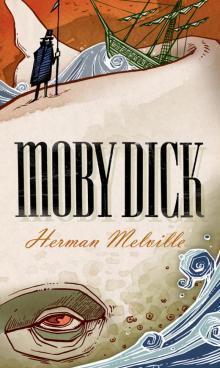 Moby Dick; Or, The Whale
Moby Dick; Or, The Whale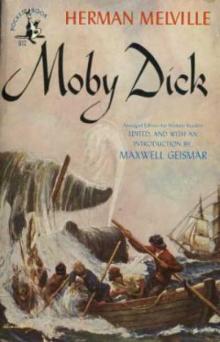 Moby Dick
Moby Dick Benito Cereno and Bartleby the Scrivener
Benito Cereno and Bartleby the Scrivener Israel Potter: His Fifty Years of Exile (Annotated Edition)
Israel Potter: His Fifty Years of Exile (Annotated Edition)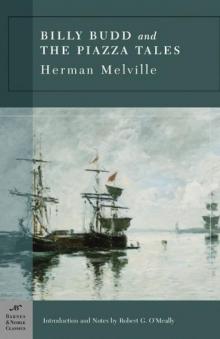 Billy Budd and the Piazza Tales
Billy Budd and the Piazza Tales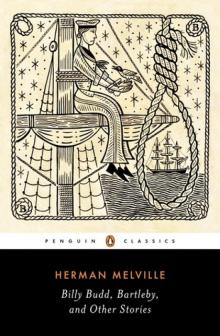 Billy Budd, Bartleby, and Other Stories
Billy Budd, Bartleby, and Other Stories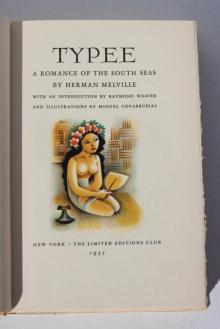 Typee: A Romance of the South Seas
Typee: A Romance of the South Seas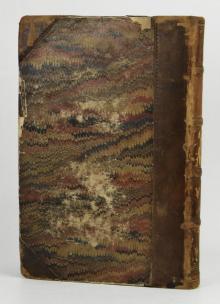 Omoo: Adventures in the South Seas
Omoo: Adventures in the South Seas White Jacket; Or, The World on a Man-of-War
White Jacket; Or, The World on a Man-of-War Redburn. His First Voyage
Redburn. His First Voyage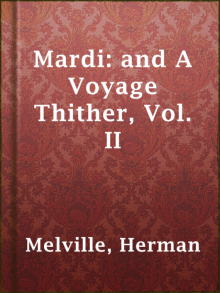 Mardi: and A Voyage Thither, Vol. II
Mardi: and A Voyage Thither, Vol. II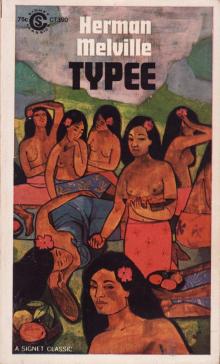 Typee
Typee The Paradise of Bachelors and the Tartarus of Maids
The Paradise of Bachelors and the Tartarus of Maids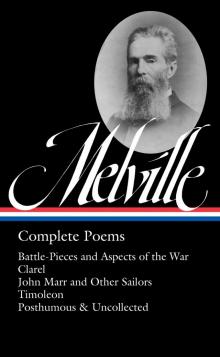 Herman Melville- Complete Poems
Herman Melville- Complete Poems Bartleby and Benito Cereno
Bartleby and Benito Cereno Moby-Dick (Barnes & Noble Classics Series)
Moby-Dick (Barnes & Noble Classics Series)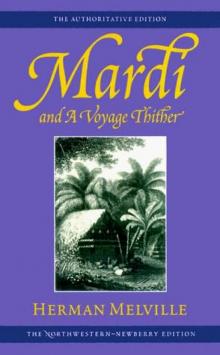 Mardi and a Voyage Thither
Mardi and a Voyage Thither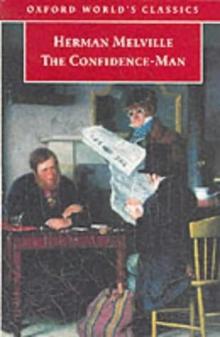 The Confidence-Man
The Confidence-Man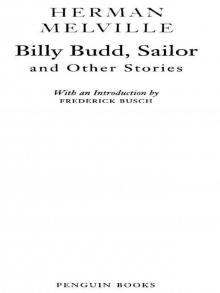 Billy Budd and Other Stories
Billy Budd and Other Stories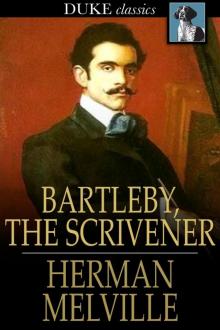 Bartleby the Scrivener
Bartleby the Scrivener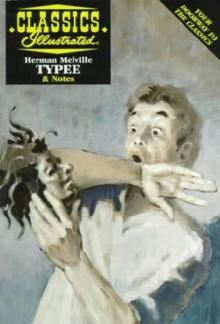 Typee: A Romance of the South Sea
Typee: A Romance of the South Sea I and My Chimney
I and My Chimney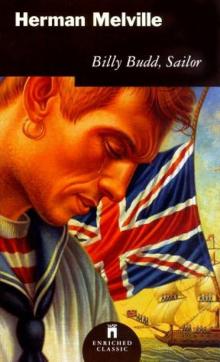 Billy Budd
Billy Budd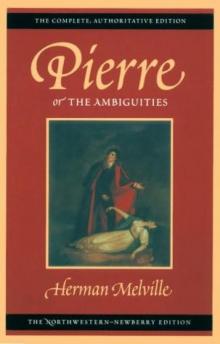 Pierre, Or the Ambiguities
Pierre, Or the Ambiguities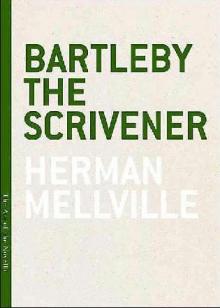 Bartleby, The Scrivener A Story of Wall-Street
Bartleby, The Scrivener A Story of Wall-Street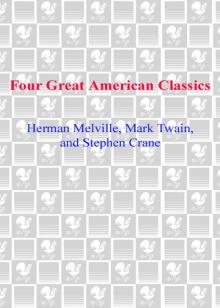 Four Great American Classics
Four Great American Classics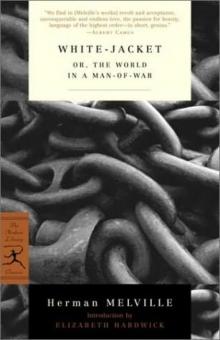 White Jacket or, The World on a Man-of-War
White Jacket or, The World on a Man-of-War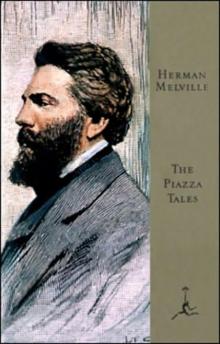 The Piazza Tales
The Piazza Tales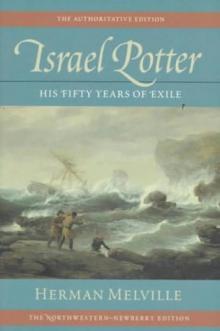 Israel Potter. Fifty Years of Exile
Israel Potter. Fifty Years of Exile